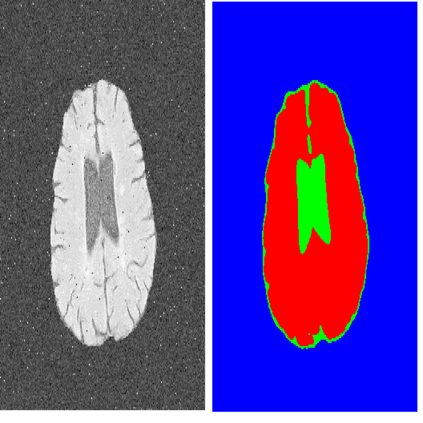Many eye diseases like Diabetic Macular Edema (DME), Age-related Macular Degeneration (AMD), and Glaucoma manifest in the retina, can cause irreversible blindness or severely impair the central version. The Optical Coherence Tomography (OCT), a 3D scan of the retina with high qualitative information about the retinal morphology, can be used to diagnose and monitor changes in the retinal anatomy. Many Deep Learning (DL) methods have shared the success of developing an automated tool to monitor pathological changes in the retina. However, the success of these methods depend mainly on large datasets. To address the challenge from very small and limited datasets, we proposed a DL architecture termed CoNet (Coherent Network) for joint segmentation of layers and fluids in retinal OCT images on very small datasets (less than a hundred training samples). The proposed model was evaluated on the publicly available Duke DME dataset consisting of 110 B-Scans from 10 patients suffering from DME. Experimental results show that the proposed model outperformed both the human experts' annotation and the current state-of-the-art architectures by a clear margin with a mean Dice Score of 88% when trained on 55 images without any data augmentation.
翻译:许多眼睛疾病,如视网膜中显露的糖尿病(DME)、与年龄有关的肿瘤代代(AMD)和Glaocoma等,都可能造成不可逆转的失明或严重损害中央版本。光相兼容成像仪(OCT)是视网膜的三维扫描,具有关于视网膜形态学的高质量信息,可用于诊断和监测视网膜解剖学的变化。许多深层学习(DL)方法都分享了开发自动工具以监测视网膜病理变化的成功。然而,这些方法的成功主要取决于大型数据集。为了应对极小和有限的数据集带来的挑战,我们提出了一个名为CoNet(Coherent Net)的DL结构,用于在极小的数据集(少于100个培训样本)对视网图层和流进行联合分解。在可公开使用的杜克DME数据集上,由来自10个受DME患者的110个B-Scans组成。实验结果显示,拟议的模型在经过培训的D-Slabitimation 88模型中,没有经过人平均的DAVAL模型,没有比值结构。</s>




